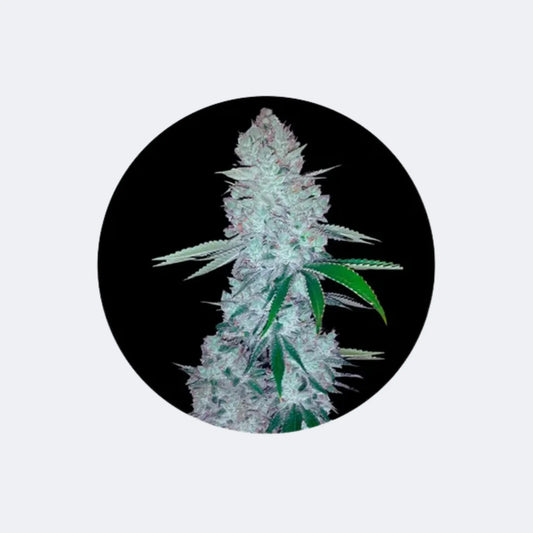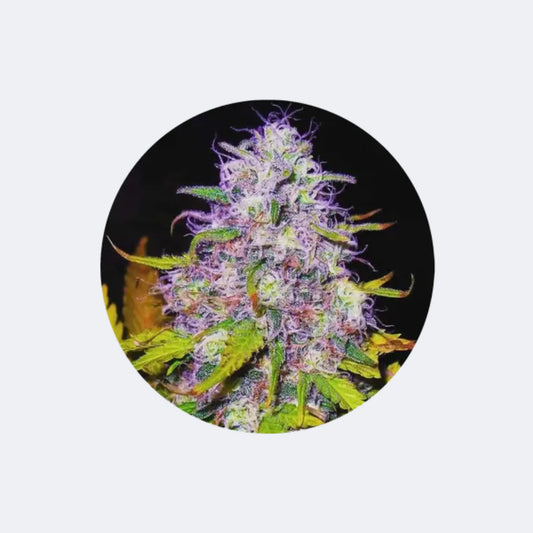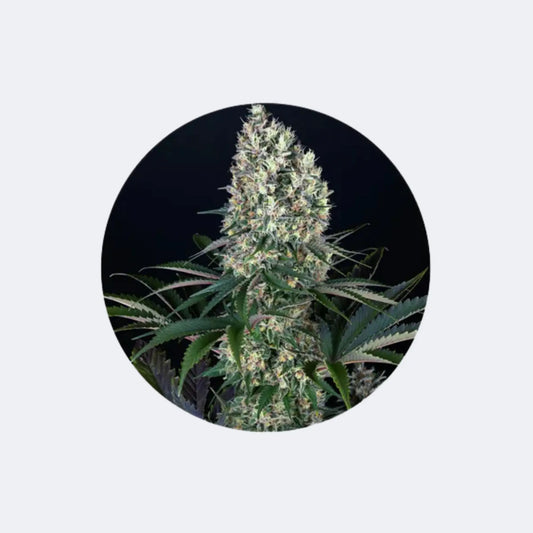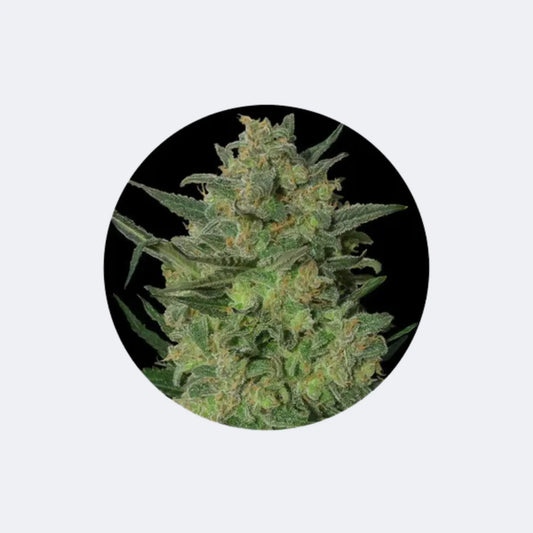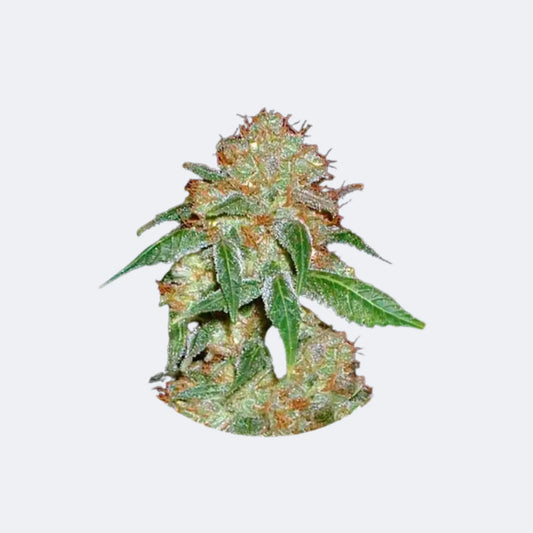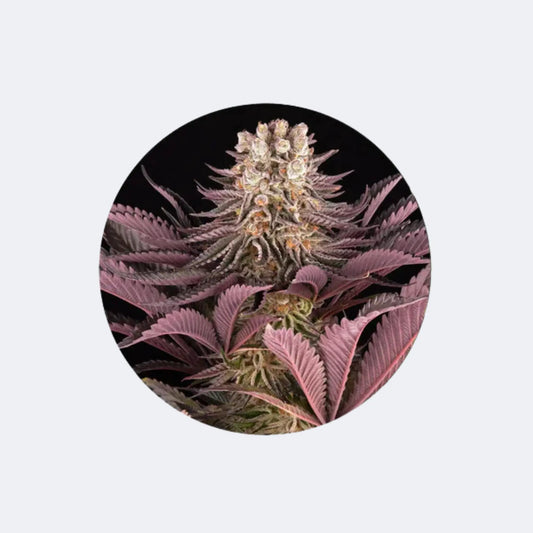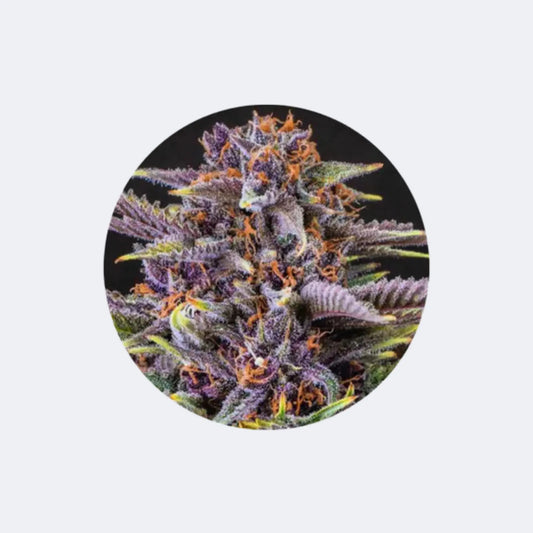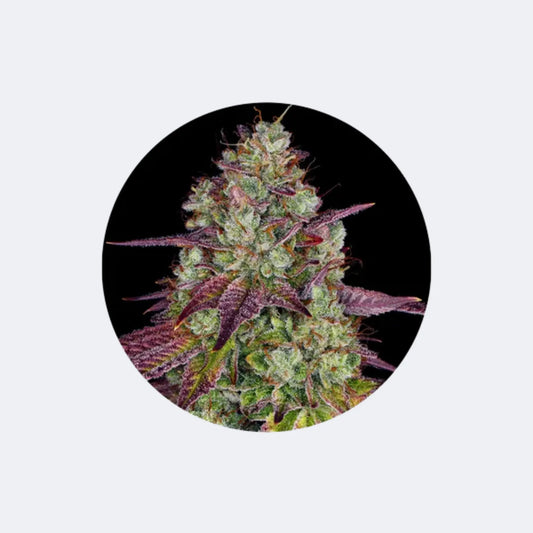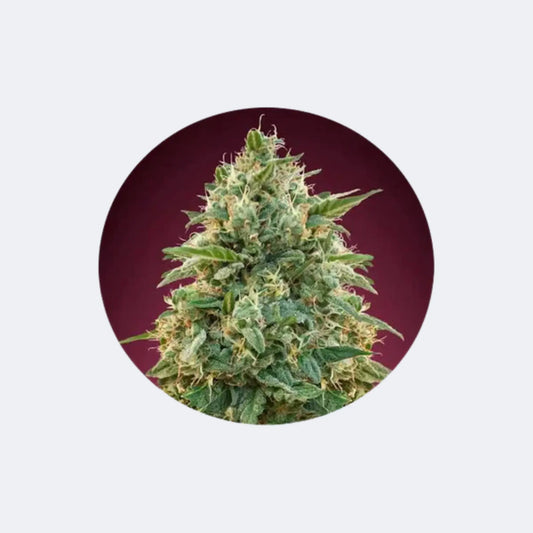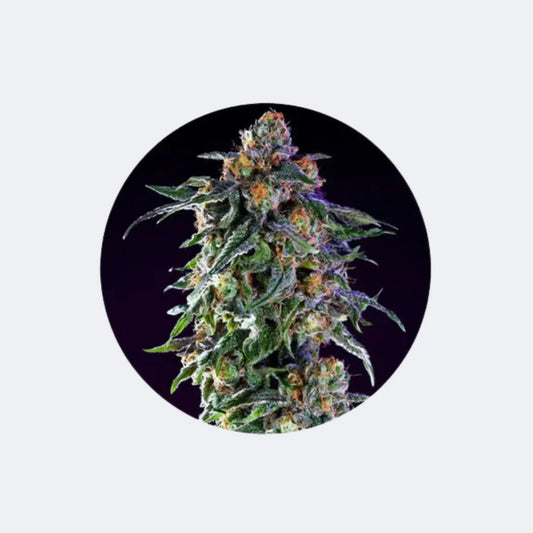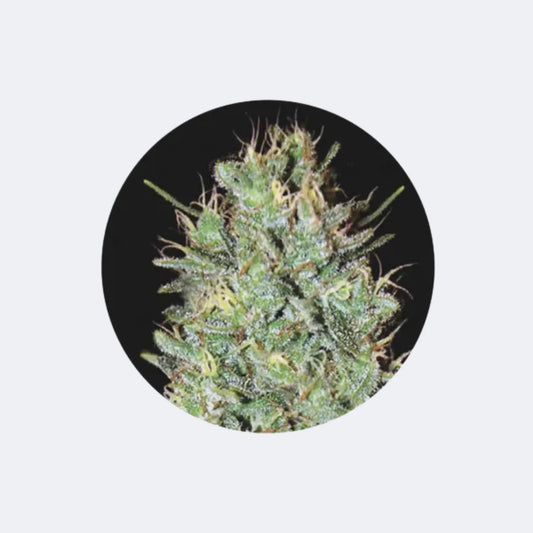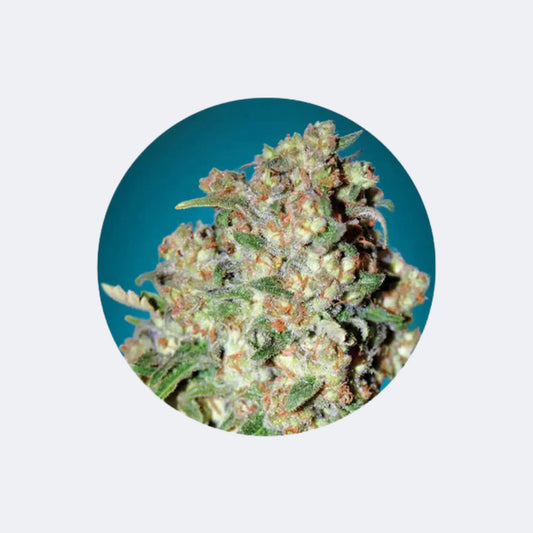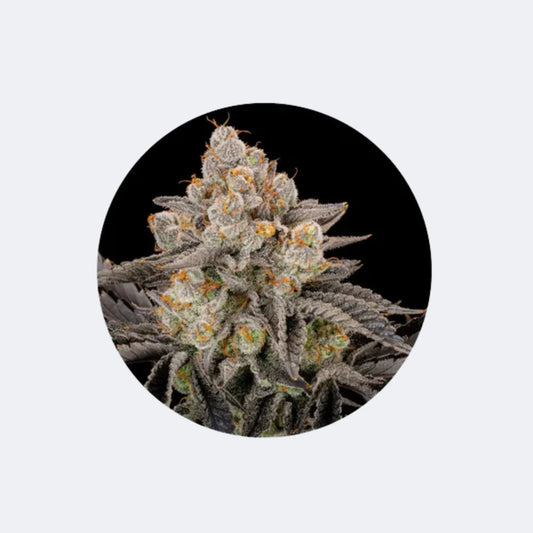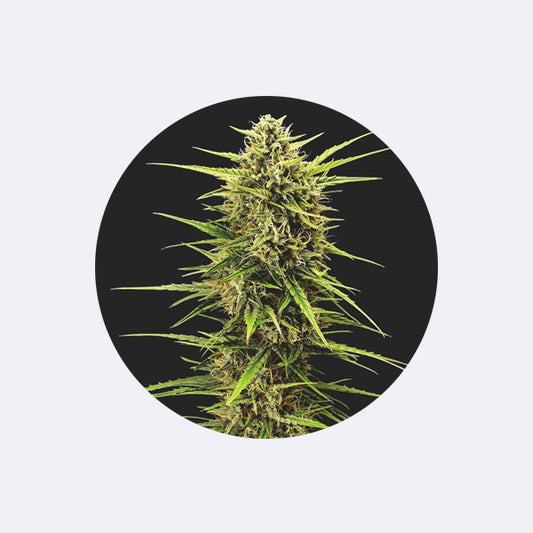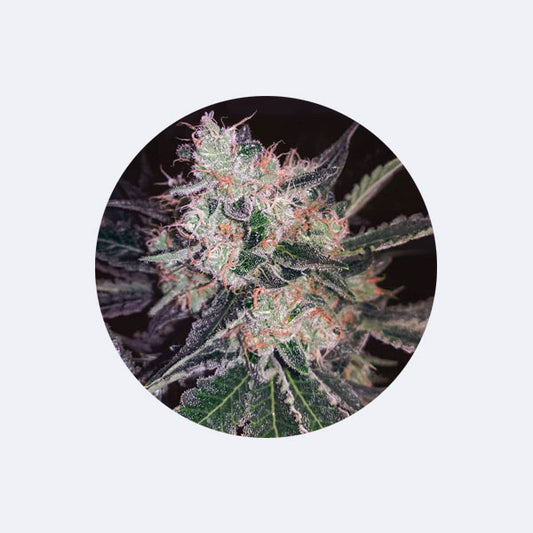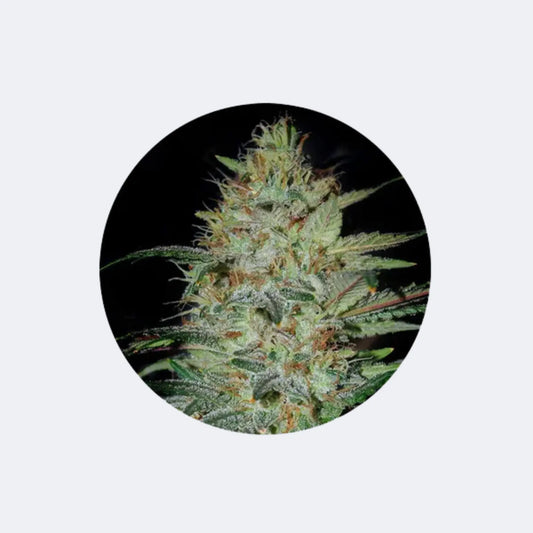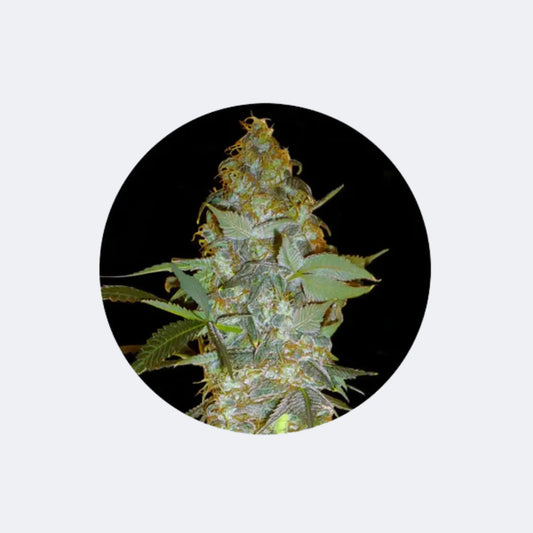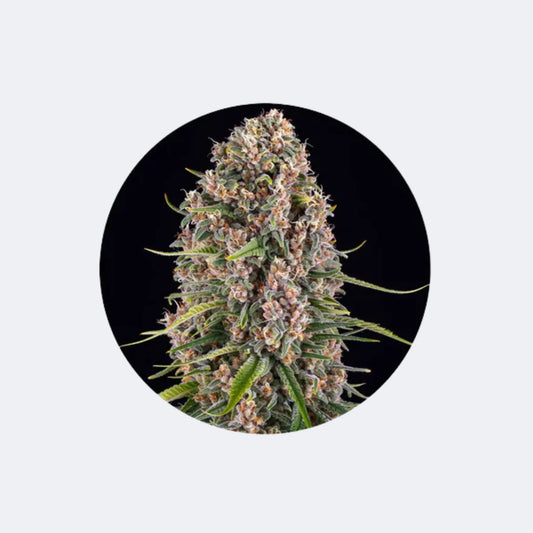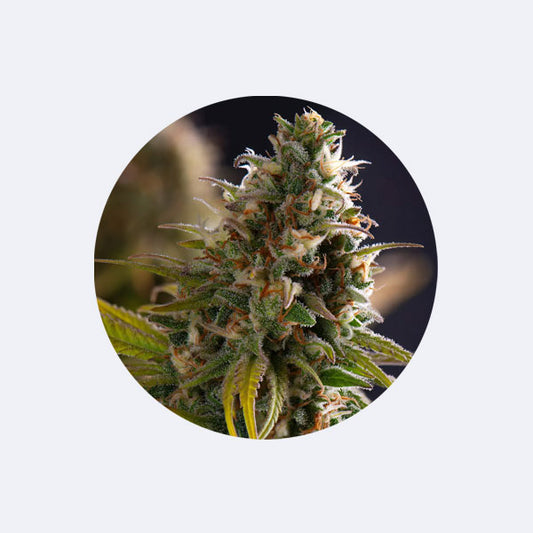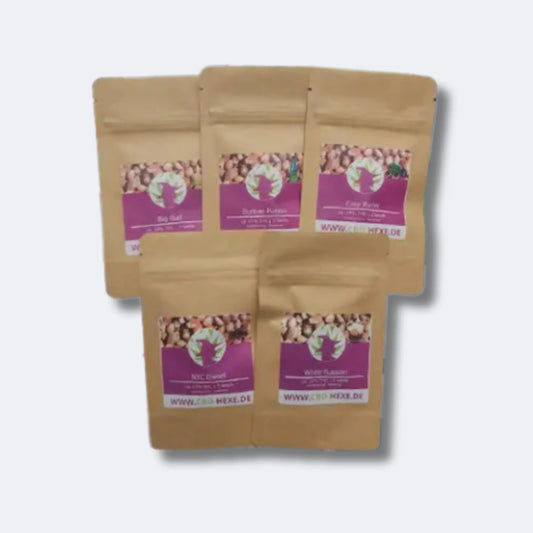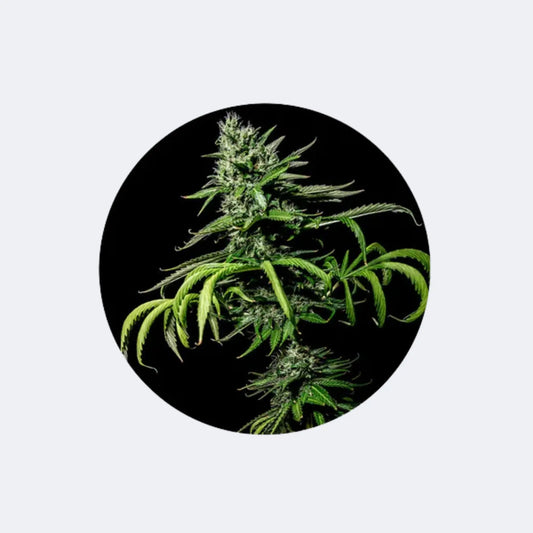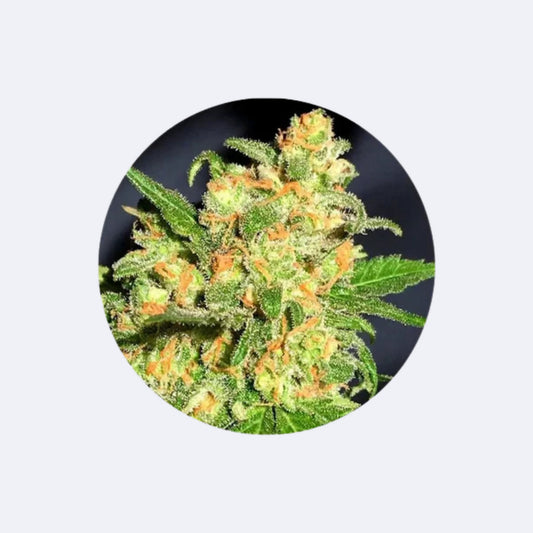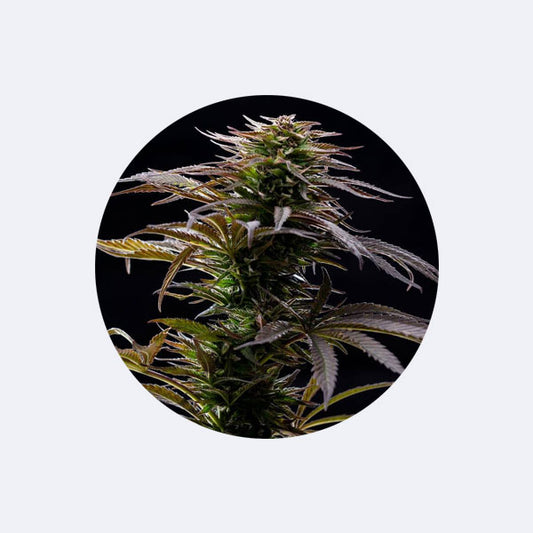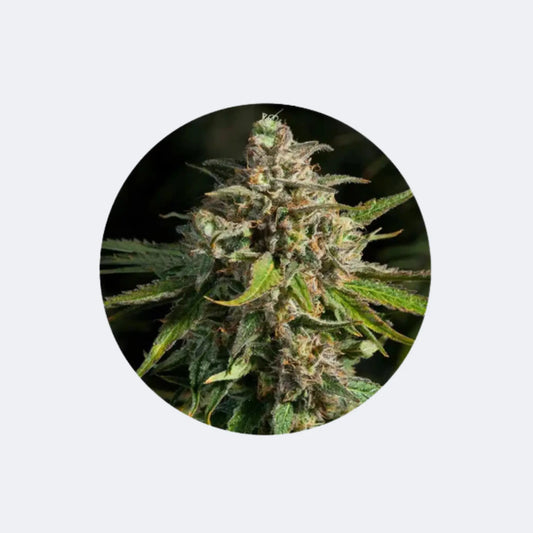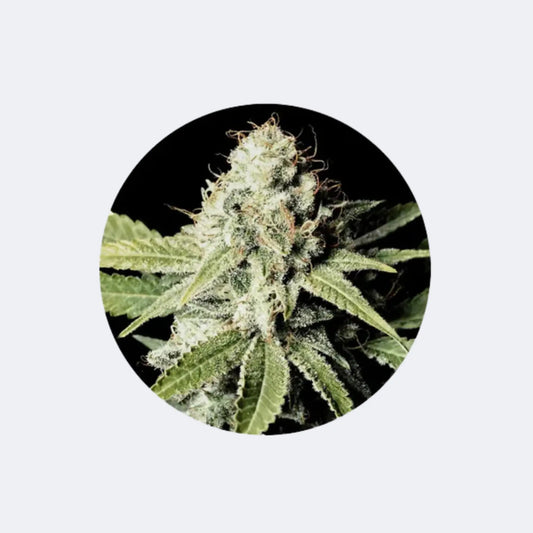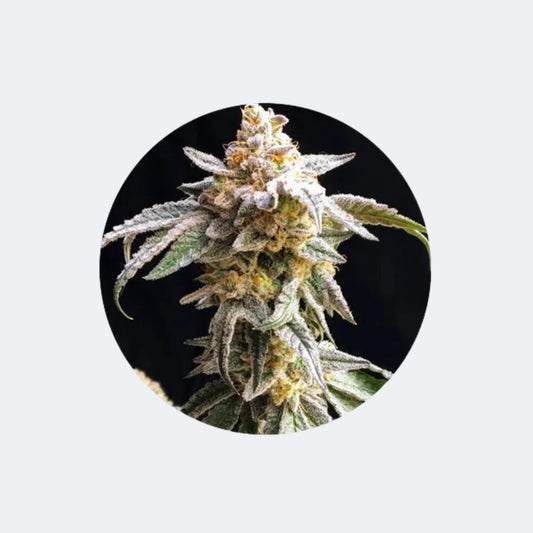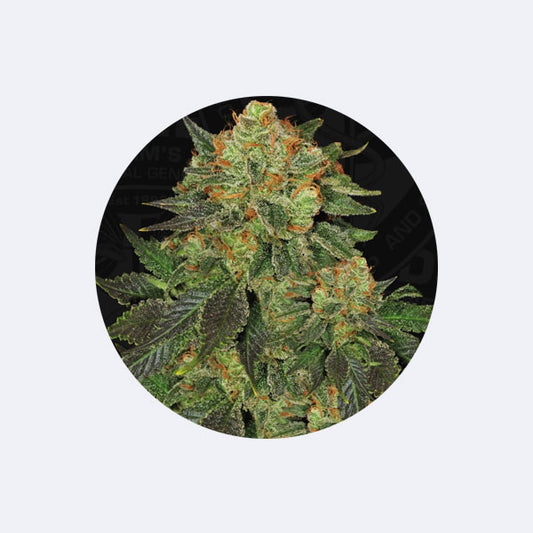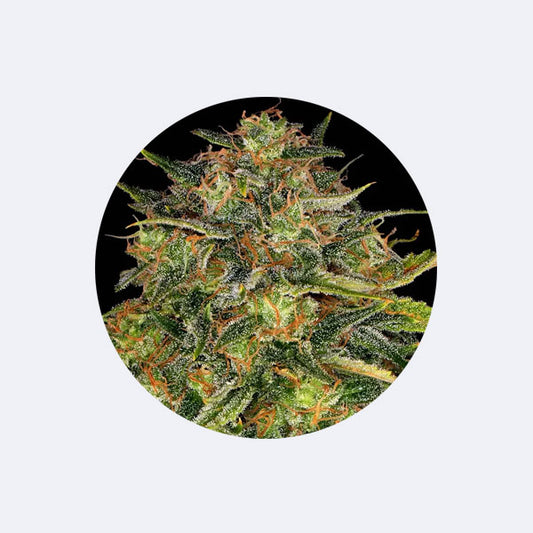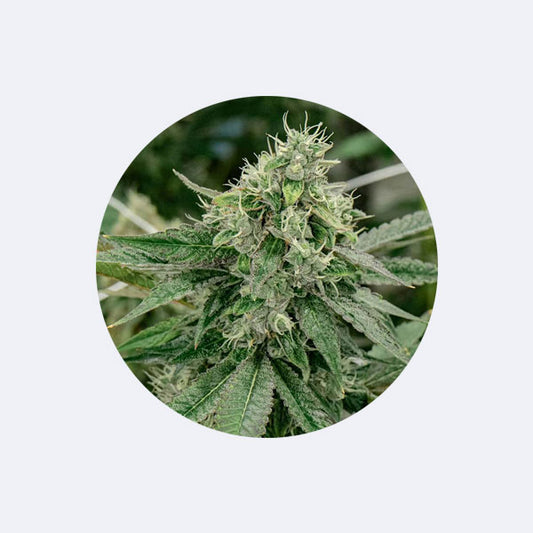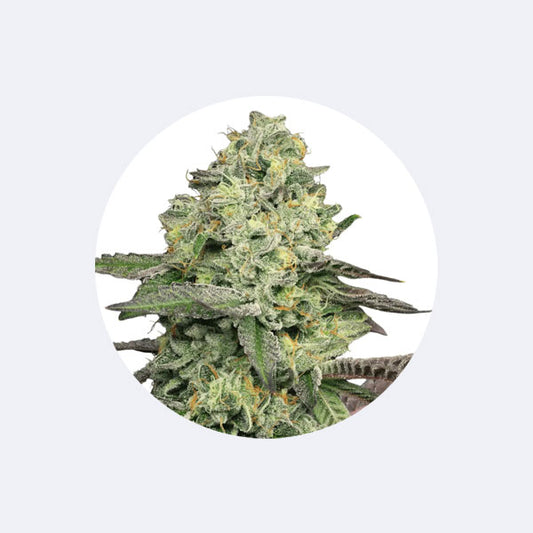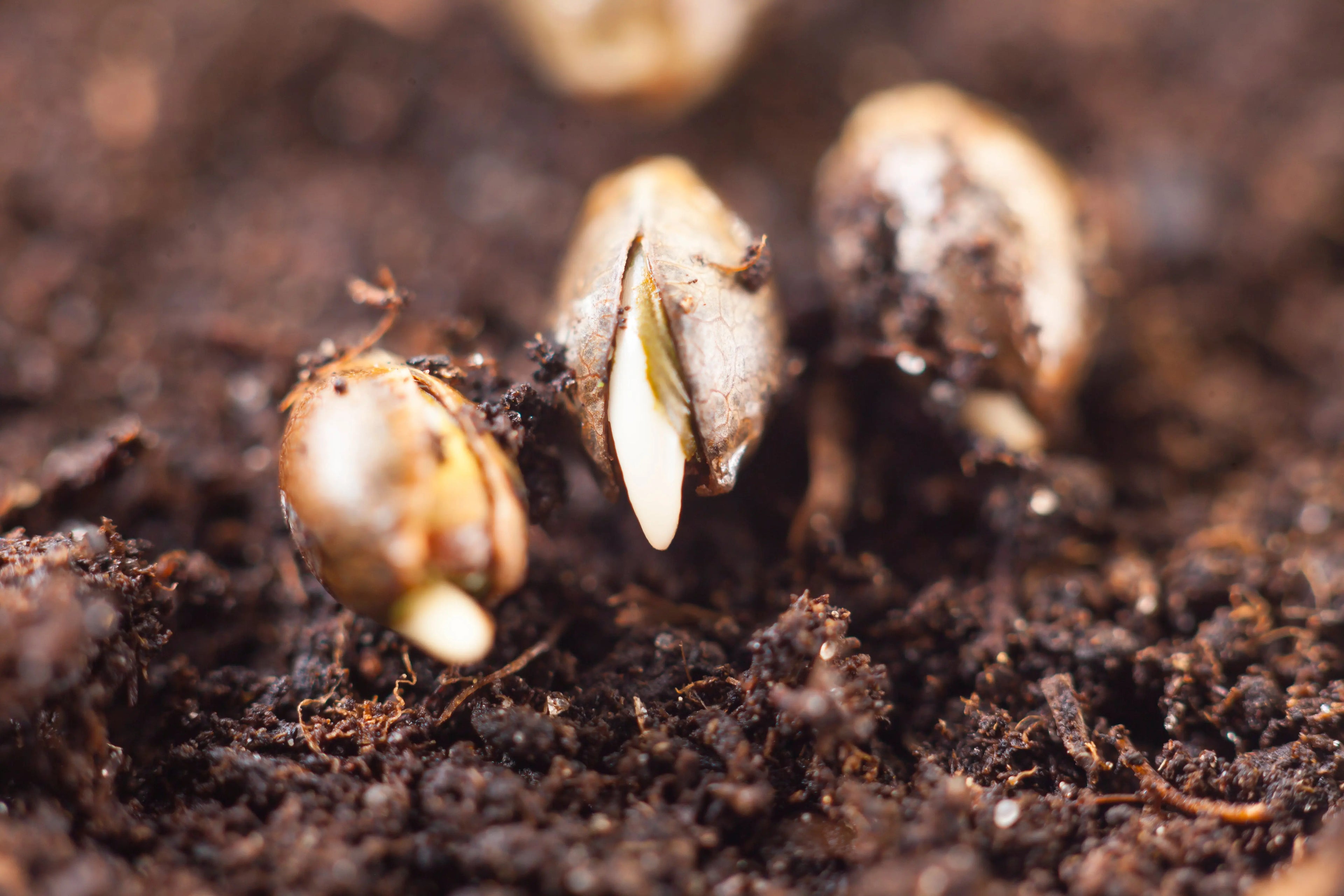
Buy THC Feminized Cannabis Seeds
Cannabis Samen Kategorien – CBD und THC Seeds
Entdecke unsere CBD Cannabis Samen, THC Samen Automatik, THC Samen Feminisiert und THC Samen Cali Genetics – Premiumqualität, starke Genetik und exklusive Strains bei CBD Hexe.
THC Feminisierte Cannabissamen
Unsere THC feminisierten Cannabissamen sind die perfekte Wahl für alle, die zuverlässige Ergebnisse und hohe Erträge beim Anbau suchen. Durch ihre spezielle Züchtung entwickeln diese Samen nahezu ausschließlich weibliche Pflanzen – was bedeutet, dass du dich voll auf die Blüte konzentrieren kannst. Sie sind damit besonders beliebt bei Züchtern, die Wert auf Effizienz und Qualität legen.
Alle Samen stammen aus kontrolliertem Anbau, überzeugen durch hohe Keimkraft und Stabilität. In Kombination mit anderen Kategorien wie THC Autoflowering Cannabissamen oder exklusiven Cali-Genetics THC Cannabissamen findest du bei uns genau die Sorte, die zu deinem Anbauziel passt.
-
Cannabis seeds "Gorilla Glue" - Feminized - 3 pcs.Regular price €9,95 EURRegular priceUnit price / per
€15,95 EURSale price €9,95 EURSale -
Cannabis seeds "Purple Haze" - Feminized - 3 pcs.Regular price €9,95 EURRegular priceUnit price / per
€15,95 EURSale price €9,95 EURSale -
Cannabis seeds "Blueberry" - Feminized - 3 pcs.Regular price €9,95 EURRegular priceUnit price / per
€15,95 EURSale price €9,95 EURSale -
Cannabis seeds "LSD" - Feminized - 3 pcs.Regular price €9,95 EURRegular priceUnit price / per
€15,95 EURSale price €9,95 EURSale -
Cannabis seeds "Dark Domina" - Feminized - 3 pcs.Regular price €9,95 EURRegular priceUnit price / per
€15,95 EURSale price €9,95 EURSale -
Cannabis/Hemp Seeds "Mimosa x Orange Punch" - Feminized - 3 pcs.Regular price €9,95 EURRegular priceUnit price / per
€15,95 EURSale price €9,95 EURSale -
Cannabis seeds "Forbidden Fruit" - Feminized - 3 pcs.Regular price €9,95 EURRegular priceUnit price / per
€15,95 EURSale price €9,95 EURSale -
Cannabis seeds "Mimosa" - Feminized - 3 pcs.Regular price €9,95 EURRegular priceUnit price / per
€15,95 EURSale price €9,95 EURSale -
!SOPO! Cannabis seeds "Gelato #41" - Feminized - 3 pcs.Regular price €8,95 EURRegular priceUnit price / per
€15,95 EURSale price €8,95 EURSale -
Cannabis seeds "Amnesia" - Feminized - 3 pcs.Regular price €9,95 EURRegular priceUnit price / per
€15,95 EURSale price €9,95 EURSale -
Cannabis/Hemp Seeds "Granddaddy Purple" - Feminized - 3 pcs.Regular price €9,95 EURRegular priceUnit price / per
€15,95 EURSale price €9,95 EURSale -
Cannabis seeds "Amnezia Haze" - Feminized - 3 pcs.Regular price €9,95 EURRegular priceUnit price / per
€15,95 EURSale price €9,95 EURSale -
Cannabis seeds "Critical" - Feminized - 3 pcs.Regular price €9,95 EURRegular priceUnit price / per
€15,95 EURSale price €9,95 EURSale -
Cannabis seeds "Gorilla Cookies" - Feminized - 3 pcs.Regular price €9,95 EURRegular priceUnit price / per
€15,95 EURSale price €9,95 EURSale -
!SOPO! Cannabis seeds "Rainbow Apples" - Feminized - 3 pcs.Regular price €8,95 EURRegular priceUnit price / per
€15,95 EURSale price €8,95 EURSale -
Cannabis seeds "Black Widow" - Feminized - 3 pcs.Regular price €9,95 EURRegular priceUnit price / per
€15,95 EURSale price €9,95 EURSale -
Cannabis/Hemp Seeds "Sensi Star" - Feminized - 3 pcs.Regular price €9,95 EURRegular priceUnit price / per
€15,95 EURSale price €9,95 EURSale -
Cannabis/Hemp Seeds "Euforia" - Feminized - 3 pcs.Regular price €9,95 EURRegular priceUnit price / per
€15,95 EURSale price €9,95 EURSale -
Cannabis seeds "Blue Cheese" - Feminized - 3 pcs.Regular price €9,95 EURRegular priceUnit price / per
€15,95 EURSale price €9,95 EURSale -
Cannabis seeds "Big Bud" - Feminized - 3 pcs. (Monster Strain)Regular price €9,95 EURRegular priceUnit price / per
€15,95 EURSale price €9,95 EURSale -
Sparkit "5x3 THC seeds feminized"Regular price €39,95 EURRegular priceUnit price / per
€49,95 EURSale price €39,95 EURSale -
Cannabis/Hemp Seeds "Tropicana Cookies" - Feminized - 3 pcs.Regular price €9,95 EURRegular priceUnit price / per
€15,95 EURSale price €9,95 EURSale -
Cannabis seeds "Bruce Banner" - Feminized - 3 pcs. (Monster Strain)Regular price €9,95 EURRegular priceUnit price / per
€15,95 EURSale price €9,95 EURSale -
Cannabis seeds "Alaskan Thuderfuck" - Feminized - 3 pcs.Regular price €9,95 EURRegular priceUnit price / per
€15,95 EURSale price €9,95 EURSale -
Cannabis/Hemp Seeds "Lavender" - Feminized - 3 pcs.Regular price €9,95 EURRegular priceUnit price / per
€15,95 EURSale price €9,95 EURSale -
Cannabis/Hemp Seeds "Great White Shark" - Feminized - 3 pcs.Regular price €9,95 EURRegular priceUnit price / per
€15,95 EURSale price €9,95 EURSale -
Cannabis/Hemp Seeds "Cookies Sherbet" - Feminized - 3 pcs.Regular price €9,95 EURRegular priceUnit price / per
€15,95 EURSale price €9,95 EURSale -
Cannabis seeds "Bubblegum" - Feminized - 3 pcs.Regular price €9,95 EURRegular priceUnit price / per
€15,95 EURSale price €9,95 EURSale -
Cannabis seeds "Cheese" - Feminized - 3 pcs.Regular price €9,95 EURRegular priceUnit price / per
€15,95 EURSale price €9,95 EURSale -
Cannabis seeds "Crescendo" - Feminized - 3 pcs.Regular price €9,95 EURRegular priceUnit price / per
€15,95 EURSale price €9,95 EURSale -
Cannabis seeds "Animal Face" - Feminized - 3 pcs.Regular price €9,95 EURRegular priceUnit price / per
€15,95 EURSale price €9,95 EURSale
FAQ's
-
Was sind feminisierte Cannabissamen?
Feminisiert bedeutet, dass die Samen so gezüchtet sind, dass fast ausschließlich weibliche Pflanzen entstehen – diese bilden die begehrten Blüten. Einen tieferen Einblick findest du in unserem Blogbeitrag: Feminisierte Cannabissamen kaufen – Ihr Schlüssel zu einem erfolgreichen Anbau.
-
Welche Vorteile haben feminisierte Samen gegenüber Autoflowering Samen?
Feminiserte Samen bieten in der Regel höhere Erträge, während THC Autoflowering Cannabissamen schneller wachsen und pflegeleichter sind. Welche Sorte besser passt, hängt von deinen Zielen ab.
-
Sind feminisierte THC Samen für Anfänger geeignet?
Ja, allerdings erfordert ihr Anbau etwas mehr Aufmerksamkeit als bei Autoflowering Samen. Anfänger, die einen unkomplizierten Start wünschen, greifen daher oft zu Autoflowering Samen.
-
Wie unterscheiden sich feminisierte Samen von Cali-Genetics Samen?
Feminiserte Samen sind auf Stabilität und Ertrag ausgelegt. Exklusive Cali-Genetics THC Cannabissamen hingegen zeichnen sich durch besondere Aromen und einzigartige Genetiken aus – ideal für Kenner.
-
Wie lange dauert der Anbau mit feminisierten Samen?
Die Wachstumsphase dauert meist etwas länger als bei Autoflowering Samen, dafür belohnen feminisierte Sorten mit größeren Erträgen und stabiler Qualität.
-
Wo kann ich feminisierte THC Samen online kaufen?
In unserem Shop findest du feminisierte THC Samen in Premium-Qualität sowie passende Alternativen in den Kategorien THC Autoflowering und Cali-Genetics.
Subscribe to the newsletter and save 10%!



